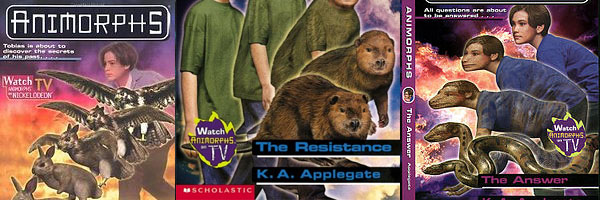
Before every book fair in elementary school, we were given a little four or five page pamphlet of what paperbacks we could expect to see. It was almost entirely scholastic books, dominated by the popular GOOSEBUMPS, with smatterings of old favorites like BABYSITTER'S CLUB. All of us, little kids with our parent's money in our pockets, flipped through pages, picking out the cool covers and sometimes even stopping to read the blurbs.
Book fairs are designed to socialize kids to do two things: read for fun, and grow into consumerism. I sit at this late hour, some decade and a half later, with an expensive degree in putting words together, as a successful outcome of that project. It worked for us because it was one of our first experiences, outside of juice boxes, to exercise our buying power. Your parents gave you ten dollars and you could buy anything you want - even this book with the scary werewolf on it.
When we were all hyped and ready to spend, we shuffled into the library in a single file line, and were amazed to find that the desks had been rearranged to form a big square, upon which books and book accessories were being sold. Our tiny, one-room library, a shitty public school thing, became a swap meet. It was as exciting as books got at our age.
If you're of my generation, I don't have to tell you that R.L. Stine's GOOSEBUMPS were the mainstay of every child's reading list. We were addicted to the series for a number of reasons: the thrill of PG-rated horror, the vast collectible potential, the illusion of taboo and the accessibility of the big text. Then there was, of course, the cover art - who still has images of a haunted, grotesque green mask buried underneath the floorboards of their subconscious? Or the illustration of a family of skeletons at a barbecue in the park? Or that static, dead stare of a ventriloquist's dummy?
Gimmicks like these moved units. Stine and Scholastic raked in our parents dollars and we took the tiny footprints they left with us through the rest of our lives. I liked GOOSEBUMPS as much as the next kid, precisely because the next kid liked them. I had, maybe, six books in the series. I liked them. But I loved ANIMORPHS.
During my book fair years, ANIMORPHS was a new series by K.A. Applegate about a group of five kids, just a little older than I, who become blessed with the ability to turn into animals and must use this power to deflect a secret invasion of mind-controlling alien slugs. But then good aliens join them. But then their family members join the aliens. But then they turned into wolves and bears and killed the bad aliens with their teeth.
It was exactly what you wanted to read when you were 9 years old.
This book was all gimmick. From the very cover, you were given a cool-by-90's-technology image of a kid morphing frame by frame into an animal. The covers were embossed, colorful, and futuristic. They all had a hole cut at the animal, which would lead into the first page, a full color scene from the story within. Once you were tricked into opening the thing, you were greeted with a flip book that ran across the bottom next to the page numbers. Now you have to flip through the pages, as the trade dress designers string you along.
All of these things came together to create a buzz among kids. It was modern, cool, sci-fi, edgy and adventurous. Applegate had me deeply and hopelessly hooked. The books came out once a month, and for three years I ate them up as soon as they came out. I bought the hardcover side stories, joined the fan club, started a web page, watched the tv show, bought the toy and more. For geeks in training, this was what taught us to absorb the entirety of something into your identity. It was just liking something, it was participating in a culture of fandom. I wasn't just a person who liked ANIMORPHS, I was an ANIMORPHS fan. For me, every obsession, every enthusiast tendency, it began right here.
It taught me to love science fiction and serialized fiction. It taught me the very basics of voice and universe building. For three years until it ended, it had me enthralled in this basically by-the-numbers saga of kids turning into tigers to kill alien slugs. It was such a big part of my excitement back then, I would never have believed that I would end up tossing all 56 books into the trash without a second thought.
Because all things we adore wither away. I moved on to cartoons, then pro-wrestling, then video games, then comic books, and then folk rock. These are all things that were big, to me, and are either now gone or will some day likely be.
Every once in a while, I will have the good fortune to run into an adult, like myself, who has been so thoroughly impacted by the adventures of the Animorphs, and we get to partake in a strange, nostalgic conversation built out of vague half-remembered artifacts. Remember when Jake...? or What was the name of the traitor again? or Did you like how it ended?
We don't always have the answers, but we have a good time trying to find them. It's enjoyable to trade stories, as if we were veterans of an old war that no one remembered. In a way it is a shared experience, and not purely of kids turning into animals killing aliens. It's also that of our childhood, and remembering our shared first step in becoming who we are and how we came to be. To be able to have something so germinal, so basic, in common with a stranger is a gift.
